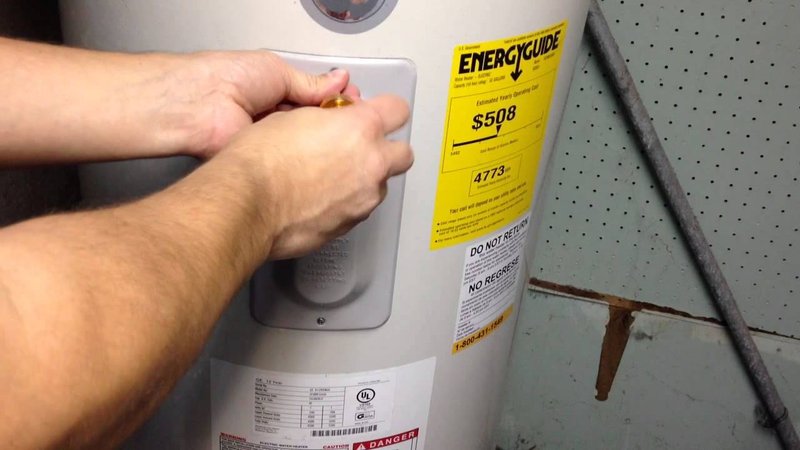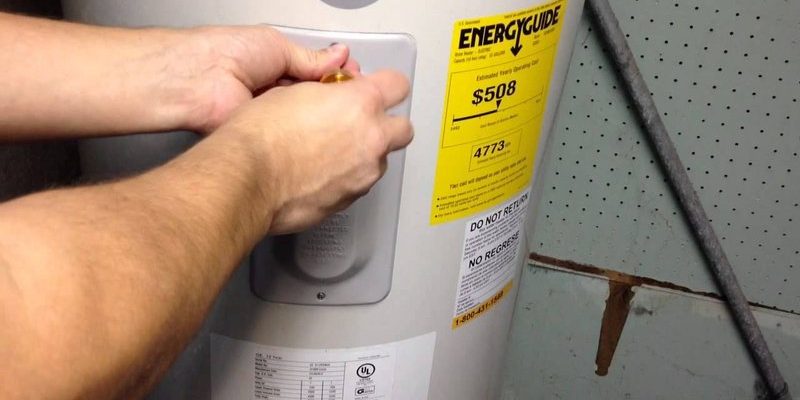
First things first, what exactly is Error Code E3? Simply put, it indicates a problem with the exhaust temperature sensor in your Kenmore water heater. Think of it like a car’s check engine light; it’s a signal that something has gone awry under the hood. While it might sound technical, fixing this error and getting your hot water running again often just requires a few simple steps that anyone can handle. So, let’s dive into what you need to know in order to reset your Kenmore water heater and say goodbye to that pesky E3 error.
Understanding Error Code E3
Before we jump into the reset process, it’s important to understand the root of the Error Code E3. When you see this code flashing on your water heater’s display, it’s essentially a message from your appliance, indicating that the exhaust temperature sensor isn’t working properly. This sensor plays a critical role in ensuring that your water heater operates safely and efficiently by monitoring the temperature of the exhaust gases.
Imagine your water heater as a bustling kitchen, with the exhaust temperature sensor acting like a vigilant chef. It ensures that the “cooking,” or heating process, goes smoothly without overheating. If the sensor malfunctions, the risk is that unmonitored high temperatures could potentially damage the unit or even pose a safety hazard. Therefore, the error code serves as a precautionary measure to halt operations until the issue is resolved.
Why does this happen? Well, there could be several reasons. The sensor might be dusty or faulty, the wiring could be loose, or there could even be a blockage in the exhaust. Understanding that these issues can arise due to regular wear and tear or external factors like dust accumulation helps us see the importance of regular maintenance. So, if you’ve been neglecting your water heater’s upkeep, now might be the time to start paying a bit more attention.
Steps to Reset Your Kenmore Water Heater
Now, let’s get to the main event: resetting your Kenmore water heater. Don’t worry—this process doesn’t require you to be an expert technician. It’s more like following a simple recipe. Here’s how you can do it:
First, turn off the power to your water heater. This step is crucial for your safety, preventing any electrical shocks during the reset. You can usually find the switch on the unit itself or on your home’s electrical panel. Once the power is off, wait for about 10 minutes. This gives the unit some time to cool down and reset internally.
Next, locate the reset button on your water heater. Typically, this is a small red button found on the side of the tank, near the thermostat. Press and hold this button for about 5 seconds. You might hear a soft click, indicating that the reset process has begun. Release the button once you’ve held it long enough.
Finally, turn the power back on to the water heater. This can be done by flipping the switch back to the “On” position. Allow the water heater a few minutes to reboot; you should notice the Error Code E3 disappearing from the display if everything is back to normal. If the code persists, you might need to check for other issues, like loose wires or persistent blockages, and potentially consult a professional.
Preventing Future Errors
Nobody wants to deal with a malfunctioning water heater more than once, so how can you prevent the Error Code E3 from appearing again? Regular maintenance is the name of the game here. Just like you’d service your car to keep it running smoothly, your water heater needs some TLC, too. This means periodically checking for dust buildup around the exhaust vent, ensuring that there are no blockages, and inspecting the wiring for any signs of wear.
Think of your water heater as an old friend. It might not demand much, but acknowledging its needs from time to time will go a long way. Scheduling annual inspections by a qualified technician can also help catch minor issues before they turn into major problems. They can clean and adjust components as needed to keep your unit running in tip-top shape.
And here’s a little secret: keeping the area around your water heater clean and free from clutter not only helps the unit function better but also ensures you can access it easily whenever you need to perform any resets or maintenance checks. Plus, it’s always a good idea to keep a copy of your water heater’s manual handy for quick reference.
When to Call in the Professionals
But what if the reset doesn’t work? Or perhaps you’re feeling a bit unsure about the whole process. That’s completely fine! There’s no shame in calling in a professional to handle things. If you’ve tried resetting the unit and are still seeing the Error Code E3, there might be a deeper issue at play that requires expert diagnosis.
Professionals have the tools and expertise to diagnose and fix more complicated problems such as faulty wiring or defective sensors. Trusting an expert can save you time and prevent further damage to your appliance. Remember, safety first—especially when dealing with electrical components and gas lines.
While calling in a pro might cost a bit, think of it as an investment in peace of mind. You wouldn’t want to risk damaging the unit further, which could lead to a complete replacement—a far more costly endeavor than a simple service call. So, if you’re in doubt, reach out for professional help. Your future self will thank you.
In conclusion, tackling an Error Code E3 on your Kenmore water heater is not as daunting as it may seem. By understanding what causes this error and following the steps to reset your unit, you can have your hot water back in no time. Regular maintenance and timely professional intervention are key to keeping your water heater, and your showers, running smoothly.
